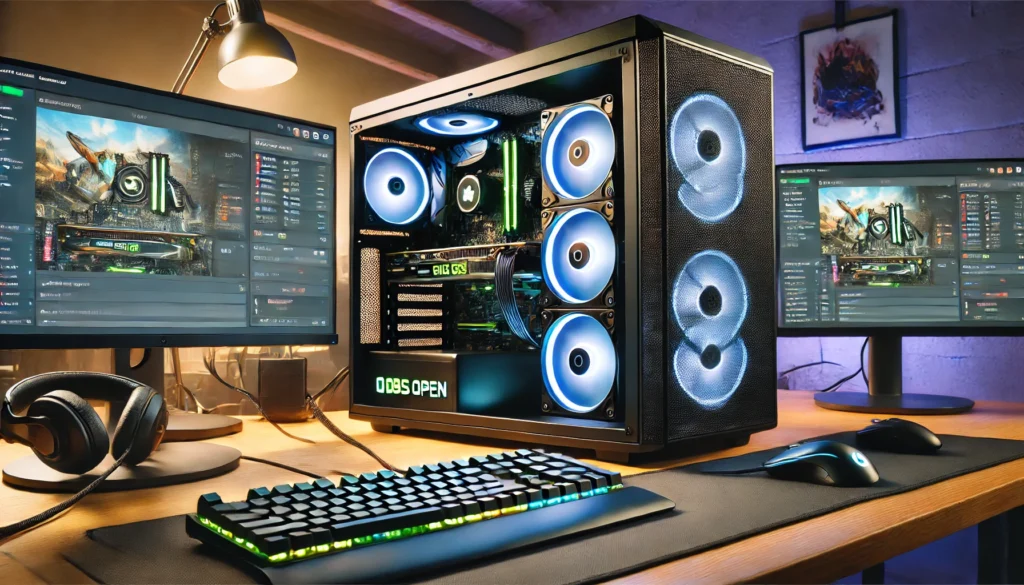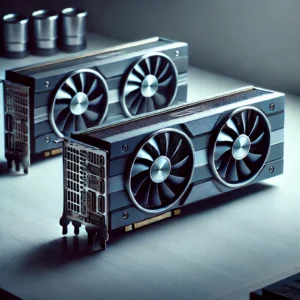Can I Use Second GPU For Streaming?
Streaming has become a popular way for gamers to share their gameplay with audiences worldwide. As the demand for high-quality streaming continues to grow, many streamers are looking for ways to enhance their setup. One common question is whether using a second GPU for streaming can improve performance. Let’s dive into this topic and explore if a second GPU is the right choice for you.
Understanding the Role of a GPU in Streaming
Before we get into the nitty-gritty, it’s essential to understand the role of a GPU (Graphics Processing Unit) in streaming. GPUs handle the rendering of images, animations, and videos, which is crucial for gaming. When you stream, your GPU not only has to manage the game but also the encoding of the video stream. This dual tasking can sometimes lead to performance issues, especially if your GPU is already under heavy load.

Benefits of Using a Second GPU for Streaming
Enhanced Performance
One of the primary benefits of using a second GPU for streaming is improved performance. By offloading the encoding tasks to a second GPU, your primary GPU can focus entirely on running the game. This separation can lead to smoother gameplay and a more stable streaming experience.
Better Stream Quality
A dedicated second GPU for encoding can result in better stream quality. It ensures that the video encoding process doesn’t compromise your gaming performance. This means fewer dropped frames, higher resolutions, and a generally better viewing experience for your audience.
Multitasking Capabilities
Using a second GPU allows for better multitasking. If you like to have multiple applications open while streaming (such as chat windows, music players, or additional monitoring software), a second GPU can help manage these tasks without bogging down your system.
Potential Drawbacks
Cost
Adding a second GPU to your setup can be expensive. High-quality GPUs don’t come cheap, and you’ll also need a compatible motherboard and sufficient power supply to support the additional hardware.
Complexity
Setting up a second GPU can be complex, especially if you’re not tech-savvy. You’ll need to configure your system correctly to ensure that the second GPU is used for encoding and not just sitting idle.
Diminishing Returns
For some streamers, the benefits of a second GPU might not justify the cost. If you’re a casual streamer or if your current GPU handles streaming without issues, investing in a second GPU might not provide significant improvements.

How to Set Up a Second GPU for Streaming
Hardware Requirements
To use a second GPU for streaming, you’ll need:
- A compatible motherboard with multiple PCIe slots
- Sufficient power supply to support two GPUs
- Adequate cooling to manage the extra heat
Software Configuration
Once you have the hardware, you’ll need to configure your software. Most streaming software, like OBS (Open Broadcaster Software), allows you to select which GPU handles the encoding. Ensure that your second GPU is dedicated to encoding tasks to maximize performance benefits.
Alternative Solutions
If a second GPU seems too costly or complex, there are alternative solutions to consider:
- Upgrade Your Current GPU: Sometimes, upgrading to a more powerful single GPU can provide the performance boost you need.
- Use NVENC: NVIDIA’s NVENC is a dedicated encoder in their GPUs that can handle streaming tasks efficiently without the need for a second GPU.
- Optimize Your Settings: Adjusting your streaming settings to balance quality and performance can help improve your streaming experience without additional hardware.
Conclusion
Using a second GPU for streaming can significantly enhance performance, stream quality, and multitasking capabilities. However, it comes with added cost and complexity. For many streamers, alternative solutions like upgrading your current GPU or optimizing settings might be sufficient.
If you’re serious about streaming and want the best possible performance, a second GPU can be a worthwhile investment. Just ensure you’re prepared for the added expense and setup requirements.
For more detailed information on GPU performance, check out this comprehensive guide on What is Memory Bandwidth in GPUs and Why It Matters. It’s a valuable resource for understanding how different aspects of your GPU affect overall performance.
Ready to take your streaming to the next level? Explore your options, weigh the pros and cons, and make the choice that best fits your streaming goals and budget. Happy streaming!
FAQs
1. Can Adding a Second GPU Improve Streaming Performance?
Yes, adding a second GPU can significantly improve streaming performance by offloading the encoding tasks from your primary GPU. This allows your main GPU to focus solely on gaming, leading to smoother gameplay and higher stream quality.
2. What Are the Benefits of Using a Second GPU for Streaming?
The primary benefits of using a second GPU for streaming include enhanced performance, better stream quality, and improved multitasking capabilities. With a second GPU handling encoding, you can achieve higher resolutions, more stable streams, and manage additional tasks like chat windows and monitoring software without slowing down your system.
3. Is It Cost-Effective to Use a different GPU for Streaming?
While using a second GPU can provide significant performance improvements, it can also be expensive. The cost includes the GPU itself, a compatible motherboard, a sufficient power supply, and adequate cooling solutions. For casual streamers, upgrading a single GPU or optimizing settings might be more cost-effective alternatives.
4. How Do I Set Up a another GPU for Streaming?
To set up a second GPU for streaming, ensure you have a compatible motherboard with multiple PCIe slots, a powerful enough power supply, and proper cooling. Configure your streaming software, like OBS, to use the second GPU for encoding tasks. This setup maximizes the benefits of using a second GPU for streaming.
